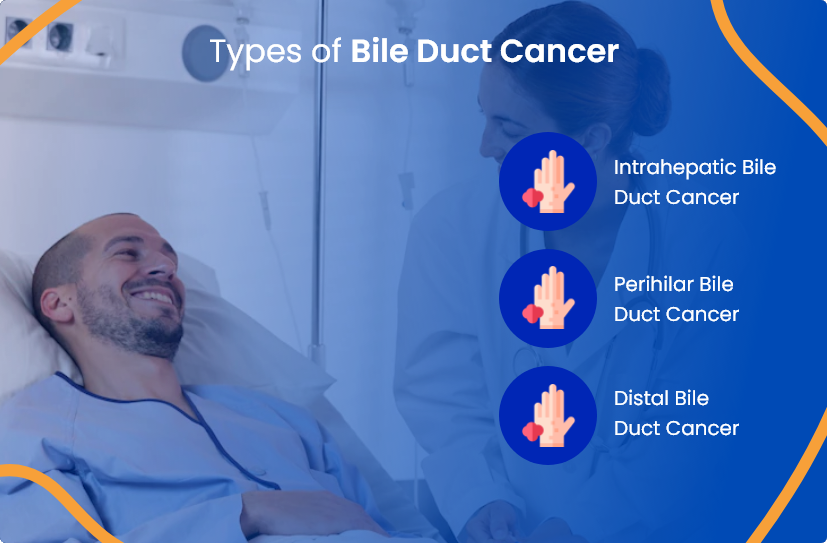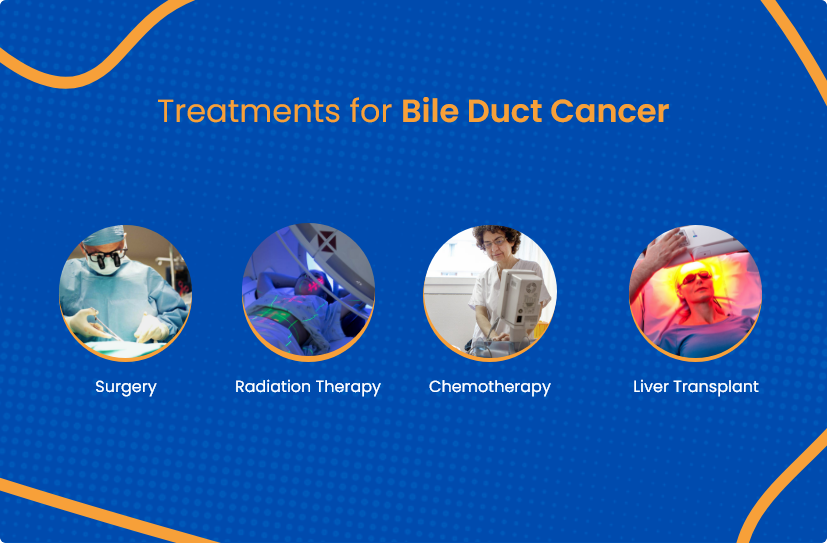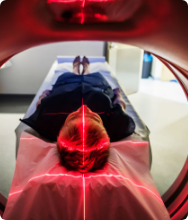
Book a Consultation
Thank you!
Your form has been sent successfully.

Around 8000 people in the United States are diagnosed with bile duct cancer each year. Cholangiocarcinoma, - also known as bile duct cancer, begins in the bile duct. It is a rare disease where malignant cells (cancer cells) start forming in the bile ducts. Although bile duct cancer can occur in persons of any age, it mostly affects the elderly.
Cholangiocarcinoma, or bile duct cancer, can begin anywhere in the bile duct system. The three forms of cancer are categorized according to the area where they begin.

This tumor develops in the liver's smaller bile duct branches.
This tumor manifests itself near the liver, especially at the intersection of the left and right hepatic ducts. They are also known as hilar cancers or Klatskin tumors.
This tumor forms near the small intestine, further down the bile duct. This malignancy starts outside of the liver, making it extrahepatic bile duct cancer.
Symptoms of this disease rarely appear until the disease has progressed considerably, but they can occasionally appear and lead to earlier detection. The symptoms can usually be attributed to a blocked bile duct. Depending on whether the tumor is in ducts inside the liver (intrahepatic) or outside the liver (extrahepatic), different symptoms may be present. Symptoms may include the following :
 Jaundice (yellowing of the skin)
Jaundice (yellowing of the skin)
 Itching
Itching
 Dark urine
Dark urine
 Abdominal pain
Abdominal pain
 Light-colored stool
Light-colored stool
 Bloating
Bloating
 Nausea
Nausea
Determining the best course of treatment partly depends on the severity of the bile duct cancer. The best chance of curing bile duct cancer is to remove the tumor. The size and location of the tumor will determine the treatment plan. Options for bile duct cancer treatment include:

Surgery includes a major liver resection. The entire tumor will be removed by the surgeon. The precise procedure will depend on the tumor's location and the severity of the disease. Some patients could need chemotherapy or radiation therapy following surgery to eradicate any affected cells that were not completely removed by the surgeon at the time of the surgery.
Chemotherapy (often known as "chemo") is a form of treatment that uses medications that are typically administered intravenously (IV) or orally. This treatment is effective for some malignancies that have spread to organs outside the bile duct since these medications enter the bloodstream and reach every part of the body. This is referred to as a systemic treatment since the medications are distributed throughout the entire body.
High-energy rays or particles are used in radiation treatment to kill cancer cells. Bile duct cancer is not frequently treated with radiation. Radiation therapy can also be used as a primary treatment for cancers that have not spread throughout the body or cannot be removed with surgery.
The entire liver is removed during a liver transplant and replaced with a healthy donated liver. Perihilar bile duct cancer patients may get a liver transplant. While the patient waits for a liver donation, another treatment is provided if necessary.
The diagnosis of cholangiocarcinoma and the severity of its spread is made possible by procedures that allow physicians to closely examine the bile duct and the surrounding areas. Staging refers to the method used to determine whether abnormal cells have moved to other parts of the body or are still within and around the bile ducts. These tests can include:

1. Liver function tests

2. Imaging tests

3. Ultrasound

4. Biopsy

5. CT scan

6. MRI
The cholangiocarcinoma specialists at ACTC are dedicated to offering patients excellent patient care by recommending successful, tailored treatment plans. On our team, you'll find some of Florida's most skilled providers. At every stage of cancer treatment, our team ensures a patient-centric approach that assists a patient's recovery.
The following are our providers who you can consult at ACTC:

Hematology/Oncology

Hematology/Oncology

Radiation Oncology

Choosing a care team you can trust is essential in these times. Cancer treatments continue to evolve, with new breakthroughs and discoveries constantly offering new treatment options. If you or a loved one have been diagnosed with cancer, it can be a difficult situation. Getting a treatment plan in place is vital. It is essential that you consult with a cancer specialist who is both qualified and experienced. Our integrated, comprehensive cancer care is delivered by a team of specialists and other cancer experts, all under one roof, and includes everything from cutting-edge cancer treatments to supportive therapies that manage side effects.
Schedule a consultation by calling
 352-345-4565
352-345-4565
Alcohol is the number one cause, as per the American Cancer Society. People who drink alcohol are more likely to get intrahepatic bile duct cancer.
Nearly all bile duct cancers start in the innermost layer of the wall of the bile duct, called the mucosa.
The extent of bile duct cancer is an important factor in deciding on treatment options. However, surgery is the main treatment for bile duct cancers.
Schedule a consultation by calling
 352-345-4565
352-345-4565